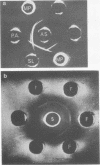Abstract
Slime material produced by three strains of Staphylococcus aureus grown in the high-carbohydrate, high-salt modified 110 medium contained ribitol teichoic acid and, in two of the three strains, a basic protein reacting with antisera to S. aureus whole cells and cell walls. The basic protein differed chemically and serologically from cell wall mucopeptide and protein A. Substances resembling the capsular antigen of the Smith diffuse strain of S. aureus were not detected, nor were any other uronic acid-containing components. When cell walls, slime material, and teichoic acid were injected intradermally into cows, only cell walls produced a skin reaction.
Full text
PDF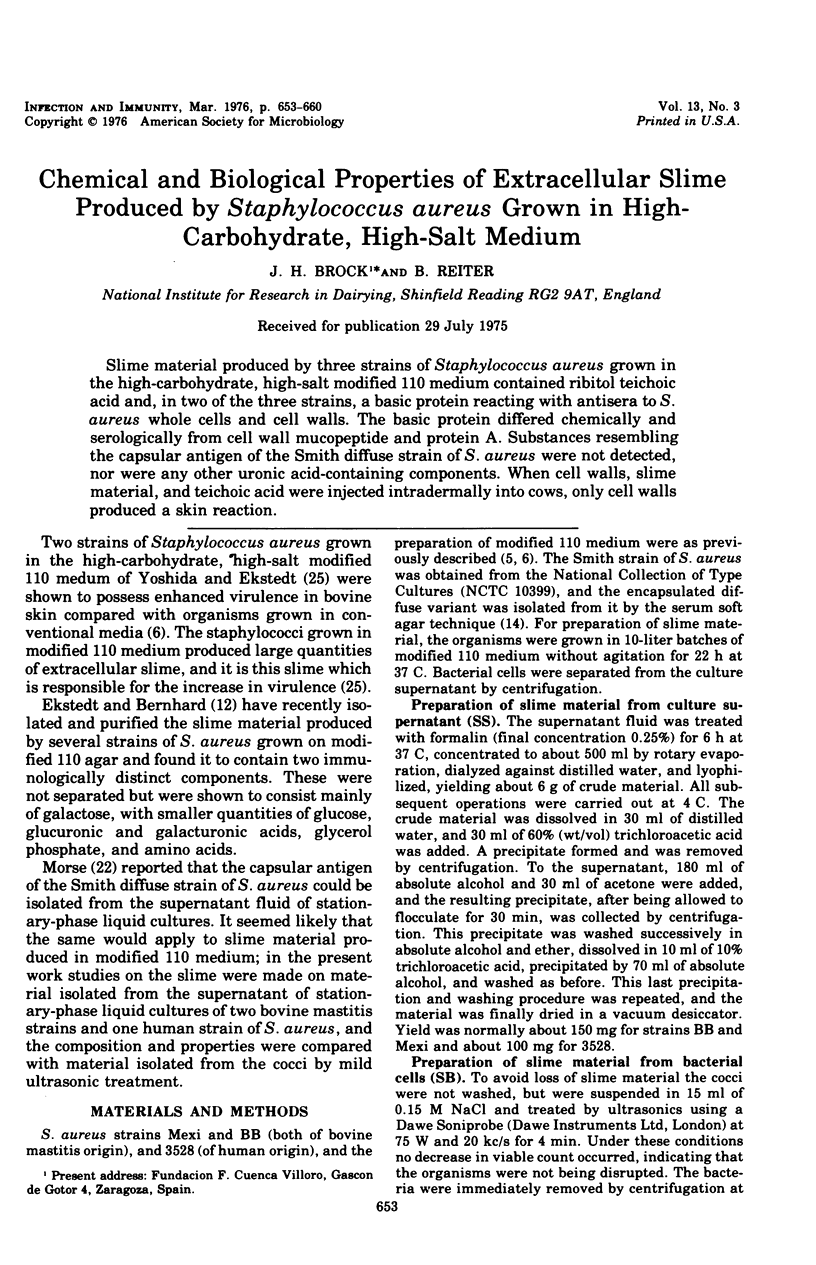
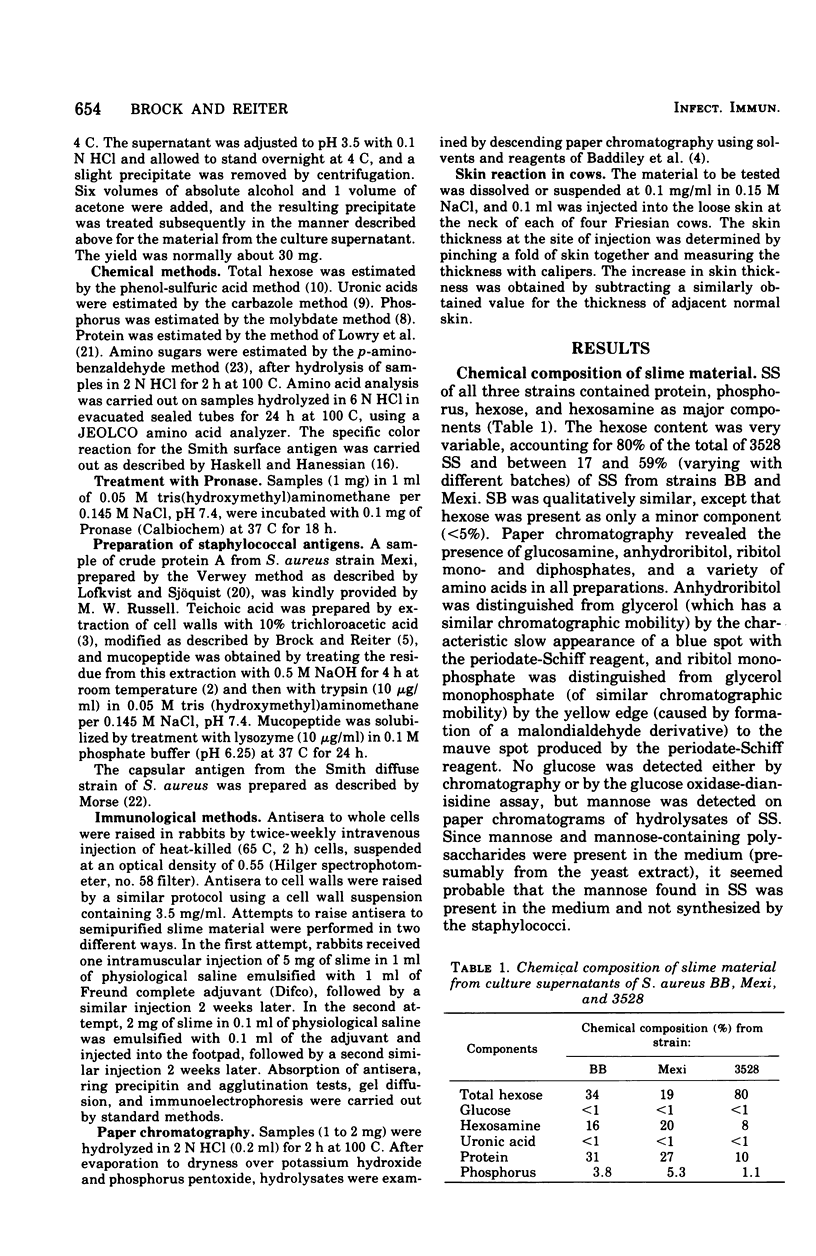
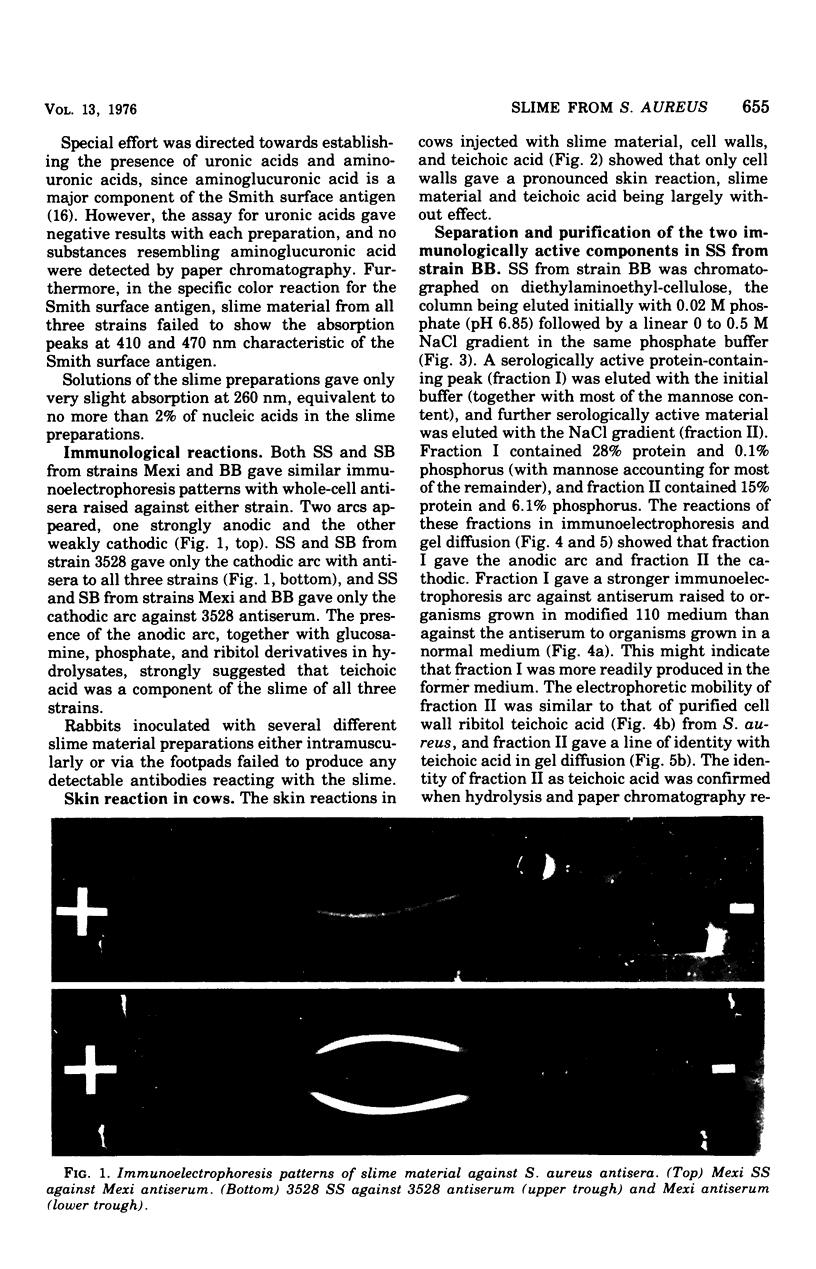
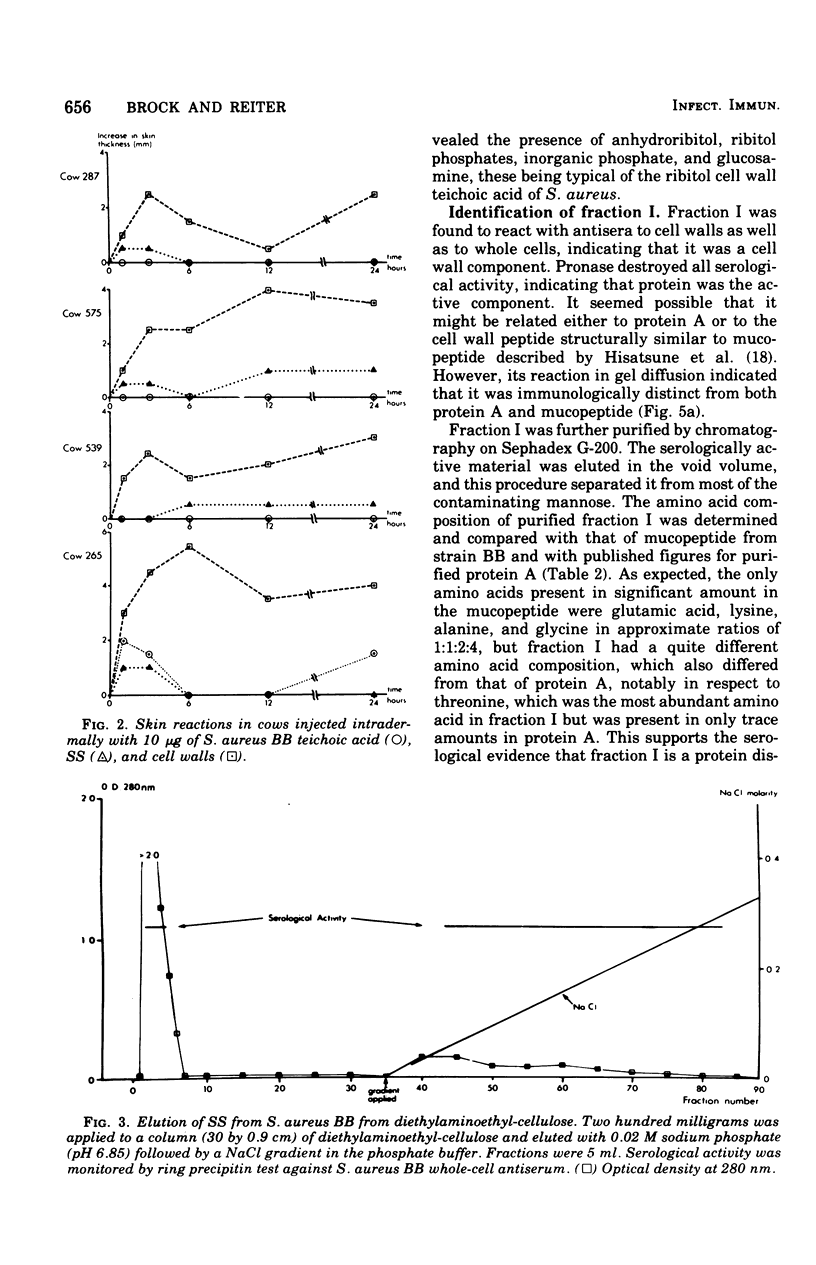
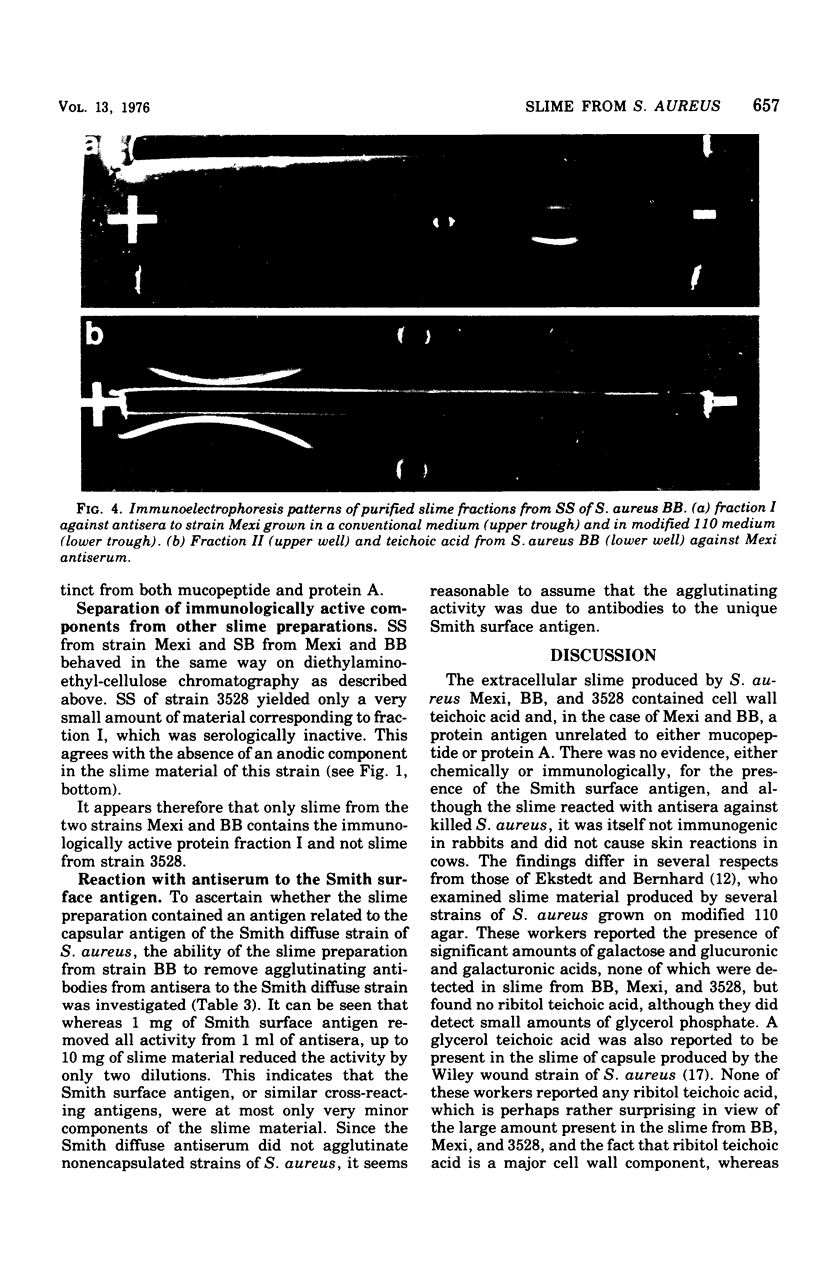
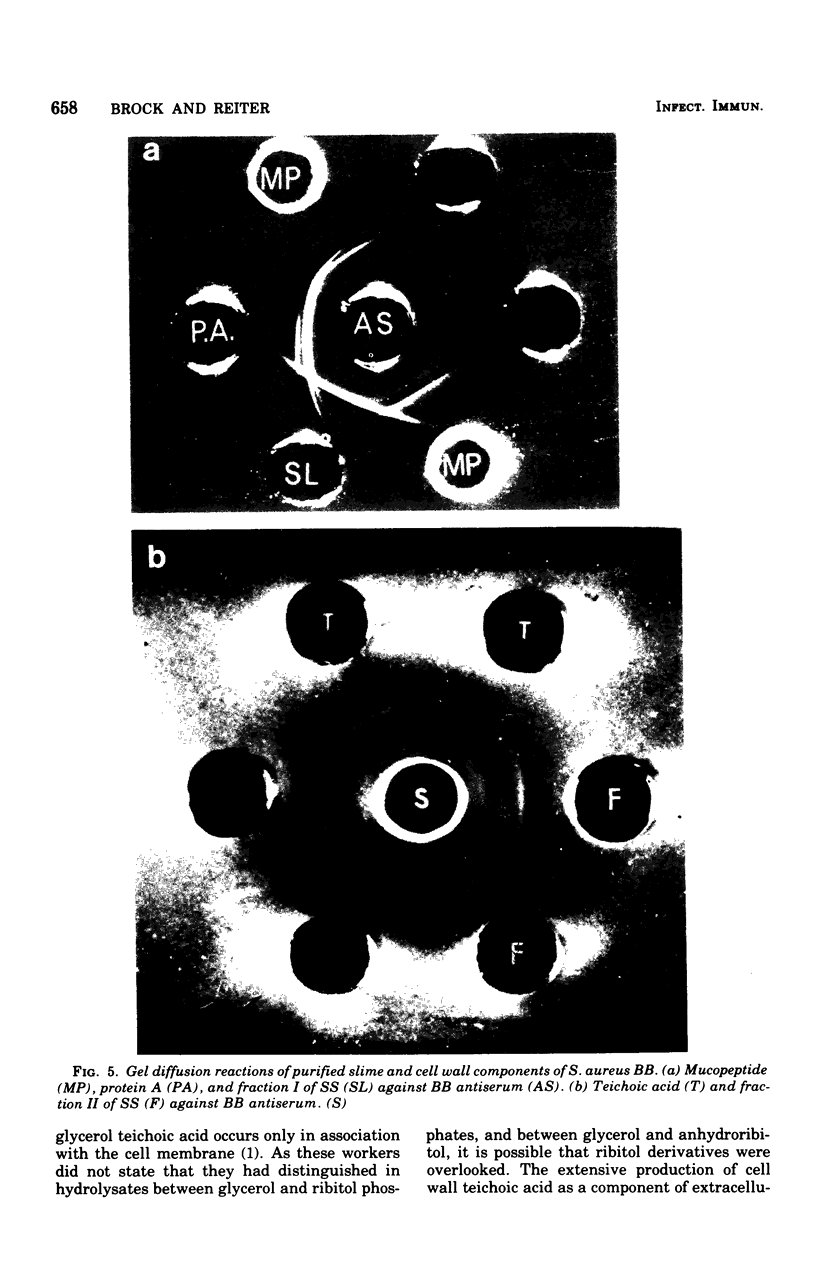
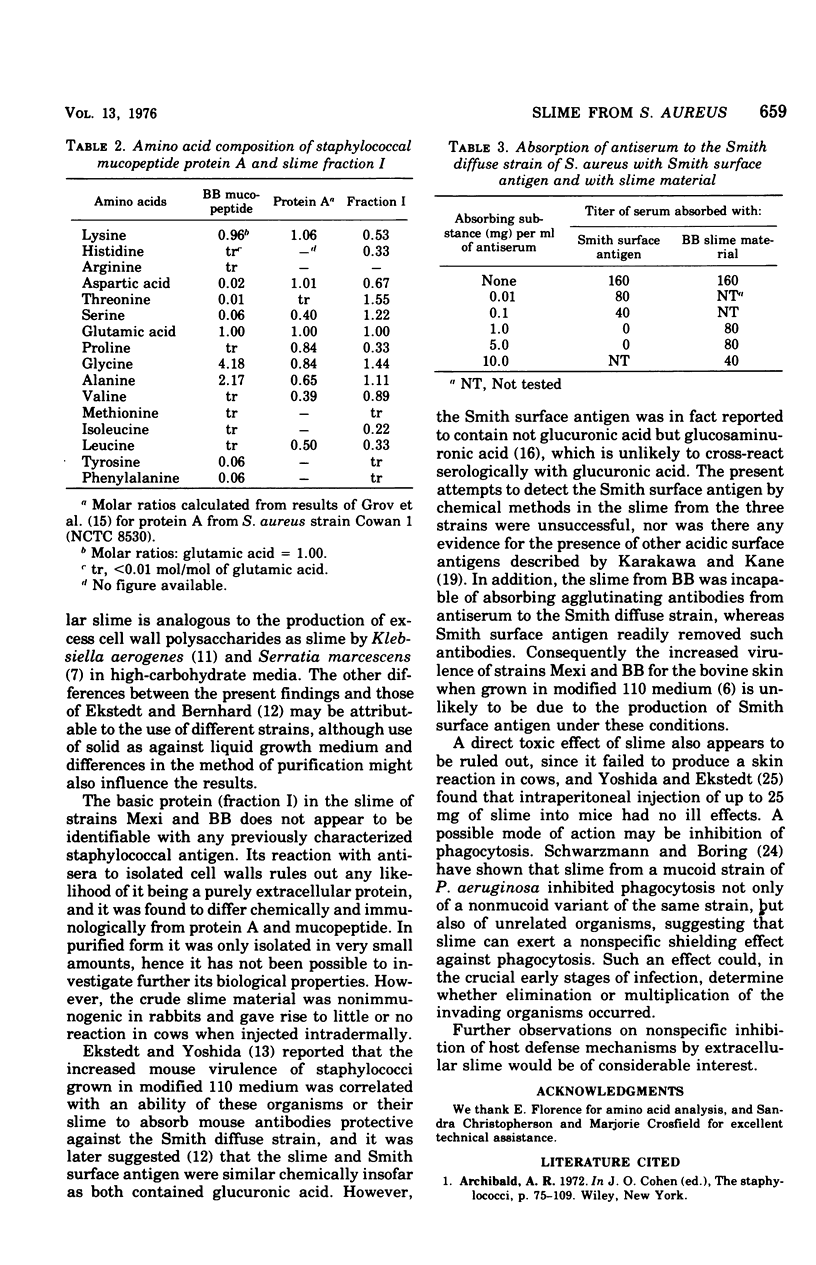
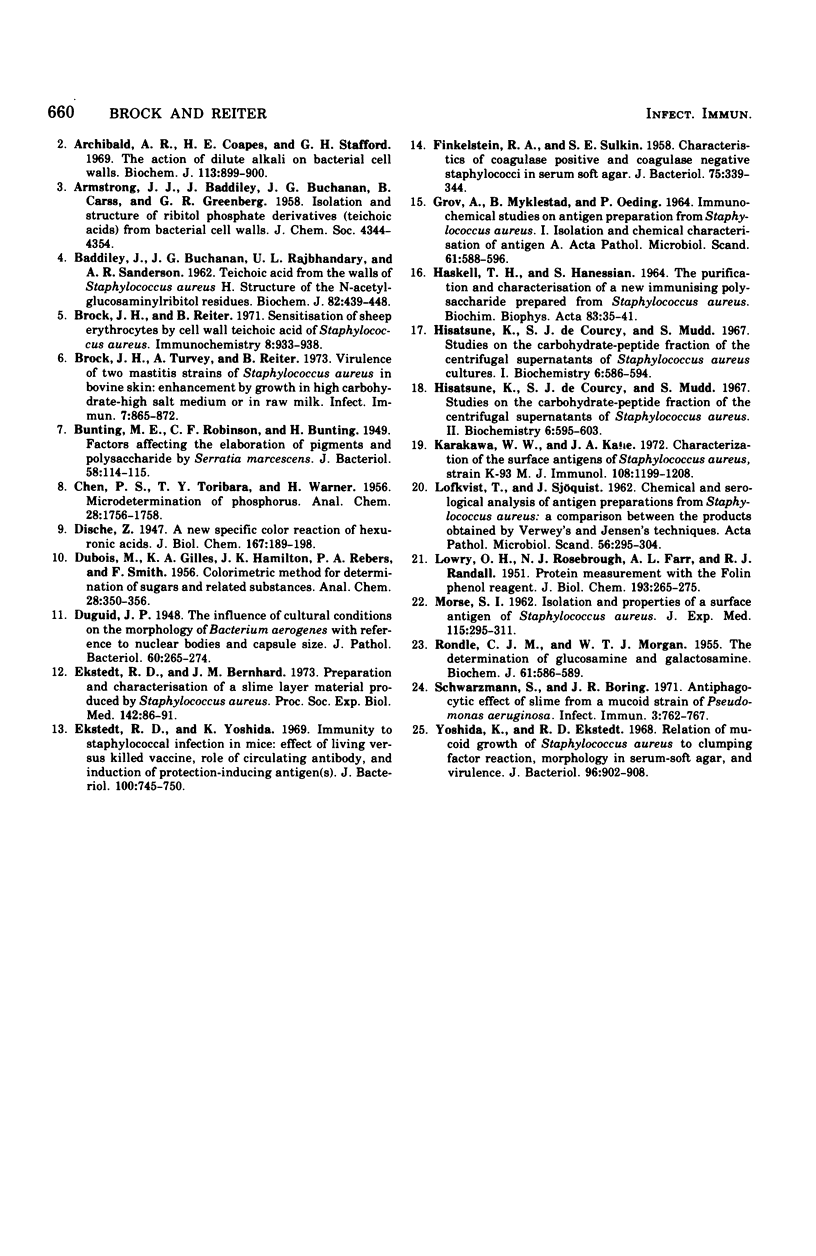
Images in this article
Selected References
These references are in PubMed. This may not be the complete list of references from this article.
- Archibald A. R., Coapes H. E., Stafford G. H. The action of dilute alkali on bacterial cell walls. Biochem J. 1969 Aug;113(5):899–900. doi: 10.1042/bj1130899. [DOI] [PMC free article] [PubMed] [Google Scholar]
- BADDILEY J., BUCHANAN J. G., RAJBHANDARY U. L., SANDERSON A. R. Teichoic acid from the walls of Staphylococcus aureus H. Structure of the N-acetylglucosaminyl-ribitol residues. Biochem J. 1962 Mar;82:439–448. doi: 10.1042/bj0820439. [DOI] [PMC free article] [PubMed] [Google Scholar]
- Brock J. H., Reiter B. Sensitisation of sheep erythrocytes by cell wall teichoic acid of Staphylococcus aureus. Immunochemistry. 1971 Oct;8(10):933–938. doi: 10.1016/0019-2791(71)90431-9. [DOI] [PubMed] [Google Scholar]
- Brock J. H., Turvey A., Reiter B. Virulence of two mastitis strains of Staphylococcus aureus in bovine skin: enhancement by growth in high carbohydrate-high salt medium or in raw milk. Infect Immun. 1973 Jun;7(6):865–872. doi: 10.1128/iai.7.6.865-872.1973. [DOI] [PMC free article] [PubMed] [Google Scholar]
- Bunting M. I., Robinow C. F., Bunting H. FACTORS AFFECTING THE ELABORATION OF PIGMENT AND POLYSACCHARIDE BY SERRATIA MARCESCENS. J Bacteriol. 1949 Jul;58(1):114–115. [PMC free article] [PubMed] [Google Scholar]
- Ekstedt R. D., Bernhard J. M. Preparation and characterization of a slime layer material produced by Staphylococcus aureus. Proc Soc Exp Biol Med. 1973 Jan;142(1):86–91. doi: 10.3181/00379727-142-36964. [DOI] [PubMed] [Google Scholar]
- Ekstedt R. D., Yoshida K. Immunity to staphylococcal infection in mice: effect of living versus killed vaccine, role of circulating antibody, and induction of protection-inducing antigen(s) in vitro. J Bacteriol. 1969 Nov;100(2):745–750. doi: 10.1128/jb.100.2.745-750.1969. [DOI] [PMC free article] [PubMed] [Google Scholar]
- FINKELSTEIN R. A., SULKIN S. E. Characteristics of coagulase positive and coagulase negative staphylococci in serum-soft agar. J Bacteriol. 1958 Mar;75(3):339–344. doi: 10.1128/jb.75.3.339-344.1958. [DOI] [PMC free article] [PubMed] [Google Scholar]
- GROV A., MYKLESTAD B., OEDING P. IMMUNOCHEMICAL STUDIES ON ANTIGEN PREPARATIONS FROM STAPHYLOCOCCUS AUREUS. 1. ISOLATION AND CHEMICAL CHARACTERIZATION OF ANTIGEN A. Acta Pathol Microbiol Scand. 1964;61:588–596. doi: 10.1111/apm.1964.61.4.588. [DOI] [PubMed] [Google Scholar]
- HASKELL T. H., HANESSIAN S. THE PURIFICATION AND CHARACTERIZATION OF A NEW ACTIVE IMMUNIZING POLYSACCHARIDE PREPARED FROM STAPHYLOCOCCUS AUREUS. Biochim Biophys Acta. 1964 Mar 2;83:35–41. doi: 10.1016/0926-6526(64)90048-5. [DOI] [PubMed] [Google Scholar]
- Hisatsune K., DeCourcy S. J., Jr, Mudd S. Studies on the carbohydrate-peptide fraction of the centrifugal supernatants of Staphylococcus aureus cultures. Biochemistry. 1967 Feb;6(2):586–594. doi: 10.1021/bi00854a029. [DOI] [PubMed] [Google Scholar]
- Karakawa W. W., Kane J. A. Characterization of the surface antigens of Staphylococcus aureus, strain K-93M. J Immunol. 1972 May;108(5):1199–1208. [PubMed] [Google Scholar]
- LOWRY O. H., ROSEBROUGH N. J., FARR A. L., RANDALL R. J. Protein measurement with the Folin phenol reagent. J Biol Chem. 1951 Nov;193(1):265–275. [PubMed] [Google Scholar]
- MORSE S. I. Isolation and properties of a surface antigen of Staphylococcus aureus. J Exp Med. 1962 Feb 1;115:295–311. doi: 10.1084/jem.115.2.295. [DOI] [PMC free article] [PubMed] [Google Scholar]
- RONDLE C. J., MORGAN W. T. The determination of glucosamine and galactosamine. Biochem J. 1955 Dec;61(4):586–589. doi: 10.1042/bj0610586. [DOI] [PMC free article] [PubMed] [Google Scholar]
- Schwarzmann S., Boring J. R. Antiphagocytic Effect of Slime from a Mucoid Strain of Pseudomonas aeruginosa. Infect Immun. 1971 Jun;3(6):762–767. doi: 10.1128/iai.3.6.762-767.1971. [DOI] [PMC free article] [PubMed] [Google Scholar]
- Yoshida K., Ekstedt R. D. Relation of mucoid growth of Staphylococcus aureus to clumping factor reaction, morphology in serum-soft agar, and virulence. J Bacteriol. 1968 Oct;96(4):902–908. doi: 10.1128/jb.96.4.902-908.1968. [DOI] [PMC free article] [PubMed] [Google Scholar]





